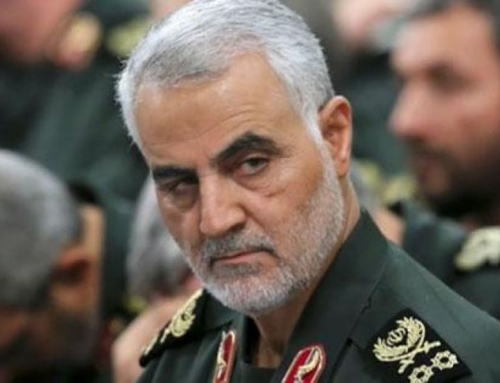
Amar Mehta, 2022 Lindsey Graham & Vladimir Putin, [https://news.sky.com/story/ukraine-invasion-us-republican-senator-lindsey-graham-calls-on-russians-to-assassinate-vladimir-putin-12557148], Sky News.
He was immediately rebuked by members of both parties, with Senator Ted Cruz saying it was an “exceptionally bad idea”, Rep. Ilhan Omar simply quote tweeted with “Seriously, Wtf?”, and Rep. Marjorie Taylor Greene stated we don’t need, “…bloodthirsty warmongering politicians trying to tweet tough by demanding assassinations.” (which is especially rich because she was removed from her committees in congress in part because she indicated support for the executions of members of the democratic party. I guess supporting the killing of members of the opposite party in the United States is okay, but is nuts when applied to leaders of an enemy state).
Most of the outrage is along moral or legal lines, and I’ve seen very little analysis as to whether the action itself would affect the trajectory of the conflict in Ukraine, so I set out to provide some. Up front, all I’m going to do is tell you the ramifications of the action and what should be known before attempting it. I’m not going to address the moral or legal implications, nor am I going to do a deep dive on the modern Russian governmental model, as I’m no expert.
Generally, Counter Leadership Targeting will be attempted by the rational actor for one of two reasons*:
- To cause the dislocation of the opponent organization’s ability to function in the prosecution of a conflict by removing the leader of the organization.
- To cause the opponent organization to alter its policy towards a conflict by replacing the leader with one whose objectives are in line with our own.
A CLT strategy of dislocation attempts to remove or hinder the direction of the organization. This strategy is not a means to an end, but rather creates conditions that allow the targeting organization to exploit the target’s loss of efficiency and effectiveness in the prosecution of the conflict. Conversely, an intent of replacement strives to alter the vision of the targeted organization and is an end unto itself.
For instance, say Country A invades Country B, a smaller, weaker state, in order to “reunite the fatherland”. Country B would conduct CLT with the intent of replacement if it believed that the successor leader of Country A had no irredentist feelings and would withdraw his troops from country B given the chance. On the other hand, if Country B believed that the successor had every intent of continuing the campaign, but Country A had highly centralized authority, Country B would conduct CLT with the intent of dislocation, using the loss of efficiency in Country A’s organization as leverage to even up the military balance in the conflict.
Obviously, what Senator Graham is referring to here is a strategy of replacement, as we’ve already unequivocally stated that we will not engage in combat with Russia, thus dislocation is irrelevant.
Simply put, a strategy of replacement is not employed to disrupt the ability of the organization to make decisions, but to change the decisions overall. It attempts to end the conflict by replacing the belligerent leadership with one that is more agreeable.
Of the two strategies presented, replacement is the most difficult to accomplish. Success does not ride on the elimination of the current leader, but on the policies of the successor. These policies, in turn, are influenced by the power base of the organization. The goals of the overall organization will drive the successor’s vision. Thus, there must not only be a replacement leader whose views coincide with the targeting organization, but the power base of the target must feel that the replacement is the legitimate head of the organization and worthy of following. Do we know any of this about Russia? Does the power base include the oligarchs, the people, the military, the politburo, or something else?
Whenever one leader succeeds another, he immediately faces a “crisis of legitimacy.” Until he can consolidate his own power base, he will be working with the power base of the old leader. If the old power base is still viewed as the legitimate vision of the organization, he will have to conform to its views in order to remain in power. Thus, in order to succeed, the targeting organization must know that there is a replacement leader with a vision that conforms to its own; that the replacement will in fact assume the position of leader; and that the replacement will have the ability to execute the new vision once in the leadership position.
There are two primary reasons why such a situation will not exist. First, it is unlikely that the replacement leader will have a vision that is different from that of the previous leader. In the majority of organizations, the successor is chosen precisely because he holds the same or similar beliefs as the current leader. Generally speaking, if the successor did not hold the same views as the acting leader, then he would not have achieved the post of successor in the first place.
Second, even if the successor espouses a new vision, he might find it difficult to execute because of opposition from within the organization. If the organization was opposed to the vision of the previous leader, chances are the conflict would not be occurring in the first place. The previous leader would already have altered his vision to conform to the organization. Thus, the successor will have to conform to the old vision to ensure his survival in the leadership position, at least in the short term.
This could be exacerbated by the very fact the leader was killed, making him a martyr. An organization may be amenable to the targeting group’s vision and would leave the conflict if the current leader died of natural causes, but may become incensed with a targeted killing, forcing the successor to adhere to the leader’s original policies out of a shift in beliefs due to his death.
Senator Graham has stated that it must be the Russian people who do the dirty work, thinking that will alleviate any “martyr syndrome”, but that is naïve. If Putin is killed, it doesn’t matter who does it, the west will be blamed – not the least because a United States Senator called for it. Propaganda is a way of life in Russia, and the state will convince the population that it was the west that conducted the strike no matter who pulls the trigger. I can fight my brother all day long, thinking he is an idiot, but if someone else does so, I step in, defending him. The same is true here. This could entail a retreat from the ongoing Russian protests against the war, leading to mothers who were wailing about the loss of their sons now screaming for retribution against the attack. After all, at the end of the day, they are still Russians.
At any rate, for a replacement strategy to work, there must exist a substantive difference between the vision and policies espoused by the targeted leader, and the vision and policies espoused by the dominant coalition of the organization. This situation rarely exists in an actual organization.
Because of this rarity, very few assassinations accomplish their intended purpose. While removing the current leader appears to solve the perceived “problem,” in actuality the assassin is merely attacking the person who is executing the vision of the organization. The history of assassination is replete with examples.
In 1981 Egyptian President Anwar Sadat was killed by Islamic fundamentalists in an attempt to spark a religious revolution much like the fundamentalist revolution in Iran. The exact opposite occurred. Sadat’s successor, Hosni Mubarak, ruthlessly cracked down on all Islamic extremists, purging them from the country.
In 1984 the Prime Minister of India, Indira Ghandi, was killed by Sikhs to thwart her attempts to prevent the creation of a Sikh state. However, far from enhancing the move for Sikh separatism, her assassination precipitated the deaths of some three thousand Sikhs at the hands of mobs in eighty cities, and the stability of a united India was more assured than ever. Her son, Rajiv Ghandi, succeeded her as Prime Minister in an overwhelming victory during a general election, thereby ensuring that her policies would continue.
This is where Senator Graham and others who support his views are engaging in wishful thinking. Does anyone have any idea who the successor of Vladimir Putin would be? What if he’s worse than Putin? What if he’s sitting there right now urging Putin to take it to NATO and go all out, but Putin – so far – is refusing to do so? Removing Putin may ensure the exact opposite of what we desire. Our own counter-leadership targeting of terrorist groups is replete with examples of replacement leaders who ended up being much better at terrorism than the man we killed.
In the end, before using twitter to call for Putin’s removal, a healthy amount of research needs to be done on the Russian succession system and overall views of the actual Russian power base – starting with determining what that is – to even see if the targeting would have any effect on the conflict – worst case, the effect exacerbates the conflict outside the confines of Ukraine.
One last note: There are always second and third order effects to any targeting action. Reciprocal targeting is a thing. The primary reason states don’t officially target the leaders of opposing states is precisely because it is morally repugnant and could invite tit-for-tat attacks. By calling for Putin’s removal, Senator Graham has opened a Pandora’s box of what is acceptable in this conflict. And he’s done it with a man who has assassinated dissident leaders all over the world, using everything from plutonium to nerve agent, including poisoning a man’s underwear. Do we really want to get in a tit-for-tat with a guy who has shown absolutely no compunction about personally targeting his opponents?
* By rational, I mean that the targeting is attempted for reasons beyond simple redemption or revenge within a framework that is looking toward future policies or goals. Irrational actors could attempt CLT for any reason, and will not be discussed.
The thoughts above are distilled from my master’s thesis, Counter-Leadership Targeting and Conflict Resolution. For further examination, to include the moral and legal implications, it can be found here.










Great post Thank you.
Recently is that we do not hear much about diversion, IED traps, mined roads etc on the route of Russian invasion forces in Ukraine. Maybe w just do not hear about it. maybe it is because of possible flying civilian casualties. In my completely uninformed opinion it seemed like logical move on the part of smaller force of defenders to slow down attack by using these guerilla/insurgency like tactics. I have seen it used on Sri Lanka.
Do you have any thoughts on that?
They are doing all of that, and more, such as blowing bridges to slow Russian advances and trenching/barricading avenues of approach to canalize Russian forces for ambushes, etc. We haven’t really seen ANY battlefield footage, but it is a true war. All we see is the shelling of the cities, because that’s where the journalists are.
Thank You.
Ukrainian soldiers are doing a tremendous job. I hope that with aid from NATO countries it will be even better. Hopefully additional troops and equipment will help them to push Russians from Kiev outskirts. The videos of Russian armour driving without any infantry cover in smaller towns and villages is what made me think about it. As todays video of the elders murdered in the maroon BMW.
I know and hope that there is a lot being done that we do not know about and that is as it should be.
And that my info about another batch of aid being already in hands of trained troops is correct and help them to stop the momentum. Even thought from stories from my grandparents during WW2 tell me that Russians where able to withstand great loses without being bothered on the top level and the machine kept rolling. still I hope for the best.
Btw. I greatly enjoyed the books!